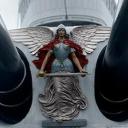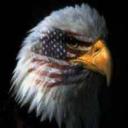Yahoo Answers is shutting down on May 4th, 2021 (Eastern Time) and beginning April 20th, 2021 (Eastern Time) the Yahoo Answers website will be in read-only mode. There will be no changes to other Yahoo properties or services, or your Yahoo account. You can find more information about the Yahoo Answers shutdown and how to download your data on this help page.
Trending News
Reloading Question: What 'range' of powder charge do you usually go with? (Handgun loads)?
So safety first, the charge weight has to be within listed ranges and show no signs of overpressure like flattened primers or spent cases that are bulged, split or won't extract.
If you have a powder the has a start load of 4.0 grains and max load of 5.0 grains, where do you usually load it at (after your checks)? Is it a different approach for different gun, lead vs. jacketed vs. plated? Do you compare for accuracy with that particular bullet/powder gun combination?
For me I usually am limited by what my powder measure throws and stay 0.1-0.3 grains below max (I tend to try to go heavy without going over). I do go lighter on 38 cal 100-125 grain lead bullets to reduce leading. If I am loading 158 grain lead or plated/jacketed 357 mag for my lever gun or Ruger Security-Six I may go right at max (obviously while still checking for pressures).
I have another (separate) question for you guys here:
gentlewolfspaws, you didn't read the question. I'm not talking about a specific load. No intelligent reloader is coming to yahoo answers for a specific load. I'm asking in general...do you load heavy, light, in the middle and why.
Cane Toad Mutiny, for what it's worth, on my first time with recipe I usually only do 25 rounds...never more than 50.
9 Answers
- C T MLv 78 years agoFavorite Answer
I personally think picking a charge weight arbitrarily is a fools endeavor. Let's take your example of a starting charge of 4 grains and a maximum charge of 5 grains, and the reloader decides "I'll just use 4.5gr since it's in the middle, how can I go wrong!" and then proceeds to load a full run of 100. The he goes to the range and shoots and has atrocious accuracy. What I would do is load a few( 5 or 10) at 4gr, a few at 4.2gr, a few at 4.4gr etc etc until the max charge is reached. Then take those to the range with my load book and shoot groups, log in my load data book my results and at that point make my decision what charge weight to use based on accuracy testing. Just picking a random number between min/max charge weight rarely gives optimum accuracy potential.
Source(s): Not my first rodeo. - The Freak ShowLv 78 years ago
When I try a new load that I'm not familiar with, I will load a batch (usually 20) at minimum. I will then cut to the center and load another batch. Then, I will load one batch at max. Essentially, I cut the load range into thirds. Since I mainly target shoot, I will then try to walk the charge down until I start to lose accuracy or reliability in a semi. I never go over max, since I don't think it really accomplishes anything useful.
The only exception is my .357 Remington Maximum. It's an ultra-mag shot out of a TC Contender, so I know it can handle it, just like you and your lever gun and Security Six. That, I will play at 110% loads, but stop when I get the first strong signs of primer extrusion.
(I have a Security Six and love it!)
- Staap ItLv 78 years ago
i was thinking your question was different. "Range " to my mind means burn rate when speaking of powders. In that case I generally begin work with a mid range burn rate. Those are powders listed in the middle of the recipe chart. The chart list fast to slow burn rates.
For handguns I first have some favorite powder stocks for small, medium, and large case capacities. Loading for the .357, of course most those loads would be .38 special for practice. BUT, for full boat .357 Magnum loads I would being right in the middle. By your example 4.5 Grains. Working up from there. I do not like to see indications of high pressure in my handguns. That is certain excessive wear. And yes, absolutely you should watch for signs of pressure, while of course on a quest for a load that offers accuracy AND performance.
See, a fast powder is kind of like hitting the bullet with a sledge hammer sending it on it's way. While the slower burning stuff is more like a push. I generally find optimum performance somewhere in between. Hence the mid range burn rate. Yes, I do also prefer the 158 grain.
The Ruger Security six is absolutely a solid revolver. ( a little ugly ) I had one, and could shoot 50' with that simply pointing it without aiming, and not loose much at all in my scores. No problem putting a cylinder full of shots into the black 3" circle on the standard 50' slow fire targets. I was so spooked by that, I figured I certainly would not want anyone in my home to pick that to use against me. That was one I never kept loaded, and normally hid. Straight shooting, and I have never had a revolver I shot so well. Mine was stainless.
Edit : SORRY, old duff brain fa^7, burn rates ARE LISTED slow to fast not as I stated in the previous, I know that, the hands and head were at odds there a second. LOL
Edit2 : Well, said Mr. Bear Crap. Thank you sir.
- AndyLv 78 years ago
For rounds I use on targets I use the lowest charge weight that gives good accuracy. I don't really care about velocity too much. I do like CTM does. I'll work up a batch of loads(usually 8 rounds) of increasing powder amounts and then go try them. When I find one I like then i'll go back and load a large batch of them. Many people want to get as close to a max load as they can. That's not always the most accurate load in my experience. I prefer accurate and economical in this day of increasing component costs. For hunting rounds in a rifle I load 4 round batches and test them. Hunting rounds I load to a higher velocity as long as they are accurate. I never start with a max or near max load from the manuals. The closest i'll go for a starting load is 1/2 grain from max. For carry guns I never carry my hand loads. In them I use factory ammo such as Hornady Critical Defense.
- How do you think about the answers? You can sign in to vote the answer.
- Mr.357Lv 78 years ago
I usually start at the minimum, and load about 3 rounds for each .1 gr up to about the mid range. Then I shoot them and watch for pressure. If the mid range load performs OK, I go with it. I don't see where a handgun, other than my .357 Mag needs to be accurate. As long as it functions ok, that is all that is needed. It saves some on powder and wear and tear on your gun.
- rickLv 68 years ago
depending on the calaber. I usally go mid range on a load for a revolver. On my autos espeacially my 9mm i stay close to the max a couple tenths under. It seams to function better. I would get a Lee powder measurer and a good scale to set the measurer with. Lee powder measurers are pretty accurate and makes it quicker to load. They are only 30 or 40 bucks. You should have a scale anyway if you are reloading.
- Bear CrapLv 78 years ago
I wont list my load data but I do load from super light to very hot for 44 magnum. You see although I have handguns that can handle the hot loads I use more of the light loads for target shooting pest control and to dispatch halibut. Halibut quit fighting real fast with a 240 cast lead bullet traveling under 800 ft per sec going through their brain. I also shoot mice in my barn with my super Redhawk and super Blackhawk and I don’t mind a lead bullet in a beam or rafter but I don’t want holes through the roof and walls. So I get those down to under 700 ft per sec with a lead waddcutter loaded backwards.
Now my hot rounds are either 340 gr or 320 hard cast solid lead bullets for bears. And then I use 240gr Hornady XTP hollowpoints loaded to max for deer hunting with the same revolvers.
I also load a few just to be loud as possible with a 180 gr bullet, this is the first round I keep in my revolver for bear protection and its for a warning shot but could be used in an emergency to slow a bear down to allow time for me to hammer it with the heavy loads.
I love guns that can be loaded different ways such s the 44 mag, 357 mag, 38 special and 44 special for examples. So think a 44 mag on rabbits will blow them up, not so with a light round that wont expand. So while hunting I can switch from bear, to deer to small game ammo. I DO however make damn sure I have the right ammo in because a brown bear is going to get real mad being shot with a light load for rabbit!
Edit; It should be known that not all powders can be loaded down much such a 296 and in fact loading down can cause a disaster! However some powders can be safely, if one follows reloading data per manufacture. I have even loaded 44 mag cases with black powder and black powder substitutes. And one that I like is triple 7 or (777) using dry cream of wheat filler or corn meal filler, I came up with some very light loads. So light in fact one must be careful the bullet doesn’t lodge in the barrel! You then have a large caliber “pellet gun” with hardly any range or power but at 15 feet it kills mice just fine.
Edit 2; Look at the loads for 357 mag at this link
http://www.handloads.com/loaddata/default.asp?Cali...
When you study them you will see some powders offer more variety of loads than others. You can load some way up and down and others you simply can not. Messing around with 1 or 2 grains with some powders can change things drastically while with powders like 2400 you can change 1 or 2 grains without huge changes in what that powder charge will do. This is why I use high volume powders that you can adjust. I can fine tune the charge for accuracy and the power I want. For example you cant do that with red dot.
- gentlewolfspawsLv 68 years ago
The amount of gunpowder varies according to the gunpowder being used and the specific cartridge it is being loaded into. The available internal case volume affects the pressures generated also.
The gunpowder manufacturer, and other sources that publish reloading manuals, often list this information for most available components. But you may have a combination of components that isn't specifically listed, and may require more research.
As you've already stated, it is wise to error on the low side of gunpowder quantities when hand loading a particular 'recipe' for the first time.
After testing & examination, then it may (or may not) be feasible to increase the gunpowder quantity to produce desired results.
Since you don't list the specific gunpowder you're asking about, it's difficult to answer your question here.
- MARKLv 78 years ago
In your suggested loads in your reloading information, it's up to you. You can safely load anywhere from the low end to the maximum range. When reloading for plated bullets, use loads for lead bullets.








